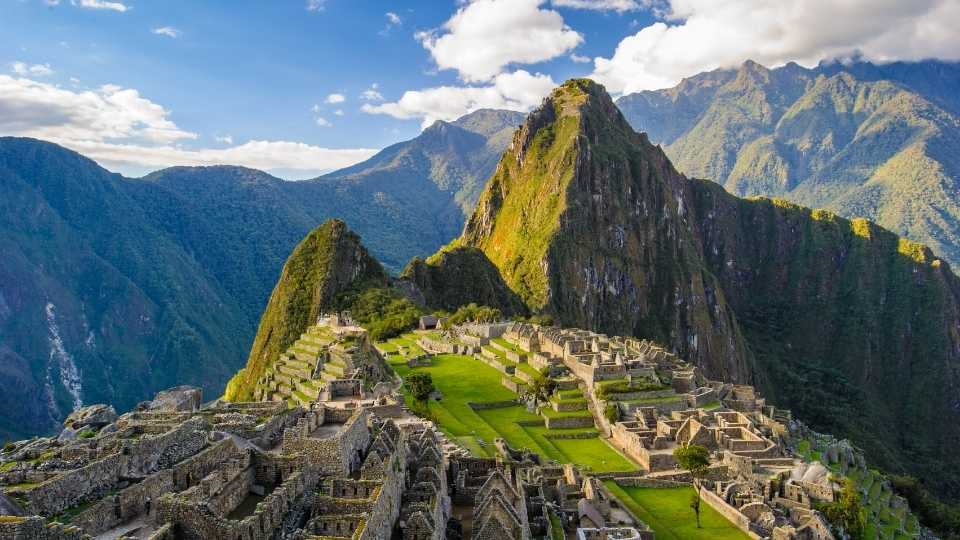Senior Travel
What are the Popular Destinations for Wildlife Encounters?

When it comes to witnessing the majesty of wildlife in their natural habitat, certain destinations around the globe stand out for their unique ecosystems, conservation efforts, and the sheer variety of species they host. From the sprawling savannas of Africa to the mystical depths of the world’s oceans, these locations offer unparalleled opportunities for wildlife encounters. Whether you’re an avid bird watcher, a marine life enthusiast, or someone who dreams of locking eyes with a wild predator, there’s a destination that caters to every type of wildlife adventure.
Safari Adventures in Africa
The word “safari” immediately conjures images of vast African landscapes dotted with majestic wildlife. Africa’s national parks are synonymous with wildlife encounters, offering a chance to see the iconic Big Five (lion, leopard, rhinoceros, elephant, and Cape buffalo) in their natural environment. The Serengeti National Park in Tanzania and the Maasai Mara National Reserve in Kenya are famed for the Great Migration, an annual event where millions of wildebeest, zebra, and gazelle traverse the plains in search of fresh grazing grounds, closely followed by predators. Meanwhile, the Kruger National Park in South Africa provides a more accessible safari experience with well-developed infrastructure and the opportunity to spot a wide range of wildlife.
Island Exploration: Galapagos Islands
The Galapagos Islands, located off the coast of Ecuador, are a living museum of evolutionary changes, with a variety of terrain and climates that have resulted in a broad diversity of animal and plant species, many of which are endemic. This archipelago offers a unique experience to observe wildlife up close, from the famous giant tortoises to the marine iguanas and playful sea lions. The islands’ strict conservation policies ensure that the delicate balance of its ecosystems is maintained, making it a prime destination for those looking to learn about biodiversity and evolution.
Underwater Wonders: Coral Reefs
The world’s coral reefs, such as the Great Barrier Reef in Australia and the Belize Barrier Reef, provide some of the most stunning visuals and biodiversity beneath the waves. These vibrant underwater ecosystems are home to thousands of species of marine life, including fish, corals, turtles, sharks, and dolphins. Snorkeling and diving in these areas not only allow for close encounters with marine wildlife but also raise awareness about the importance of marine conservation and the threats these fragile ecosystems face from climate change and human activity.
Into the Wild: Rainforest Expeditions
Rainforests, covering only a small percentage of the earth’s surface, are home to more than half of the world’s plant and animal species. The Amazon Rainforest, spanning several countries in South America, is the most well-known, offering wildlife enthusiasts the chance to immerse themselves in one of the planet’s most biodiverse regions. Whether it’s spotting jaguars in Brazil, colorful birdlife in Costa Rica, or unique primates in Madagascar, rainforest expeditions promise an adventure into the unknown, highlighting the critical need for conservation in these lush, life-sustaining habitats.
The Call of the Wild: Arctic Expeditions
For those willing to venture into colder climates, Arctic expeditions offer a completely different set of wildlife encounters. The Arctic’s stark landscapes are home to species well-adapted to the harsh conditions, including polar bears, walruses, Arctic foxes, and a variety of seabirds. Countries like Norway, Canada, and Greenland serve as gateways to this frozen wilderness, offering guided tours that respect the delicate Arctic environment and its inhabitants. Witnessing the Northern Lights dance across the sky adds an otherworldly backdrop to the already extraordinary wildlife viewing experience.
In conclusion, our planet offers an astonishing array of destinations for wildlife encounters, each with its unique habitats and species. These experiences not only fill us with wonder but also remind us of the importance of preserving these natural wonders for future generations. As we tread lightly in these wild places, we’re offered a glimpse into the complexity and beauty of the natural world, and the critical role we play in its preservation. Whether it’s through the lens of a camera, the glass of a snorkel mask, or the binoculars of a bird watcher, the opportunity to connect with wildlife in their natural habitat is a privilege that enriches our lives and broadens our understanding of the world around us.
Hello there! I’m Gabriel Holmes, a 41-year-old travel enthusiast with a degree in Marketing from the Indiana University Northwest. I’m the voice behind TopWorldTravels.com, where I channel my passion for exploration into engaging travel narratives and invaluable tips.
My journey into the world of travel is a personal odyssey, fueled by a desire to uncover the beauty and diversity our planet has to offer. Over the years, I’ve wandered through countless destinations, immersing myself in various cultures and capturing the essence of each experience through my writing. From the bustling streets of metropolitan cities to the serene landscapes off the beaten path, I’ve made it my mission to share the gems I discover along the way.
Armed with my marketing background from IUN, I approach travel with a strategic and analytical mindset. This expertise allows me to curate content on TopWorldTravels.com that resonates with a diverse audience. Whether you’re a budget backpacker or a luxury traveler, my goal is to provide insights that cater to all tastes and preferences.
Beyond the typical tourist spots, I’m committed to uncovering the authentic heart of each destination. My writings not only offer practical advice on packing and navigating unfamiliar terrains but also emphasize the importance of responsible tourism. I believe in leaving a positive impact on the places I visit, promoting sustainable practices that preserve the environment and support local communities.
Join me on my virtual expeditions at TopWorldTravels.com, where my words weave a tapestry of discovery, wanderlust, and cultural appreciation. Travel, for me, is more than a leisure activity; it’s a transformative journey that enriches the soul and broadens horizons. Let TopWorldTravels.com be your compass to a world of unforgettable experiences, as we embark on this vicarious adventure together.